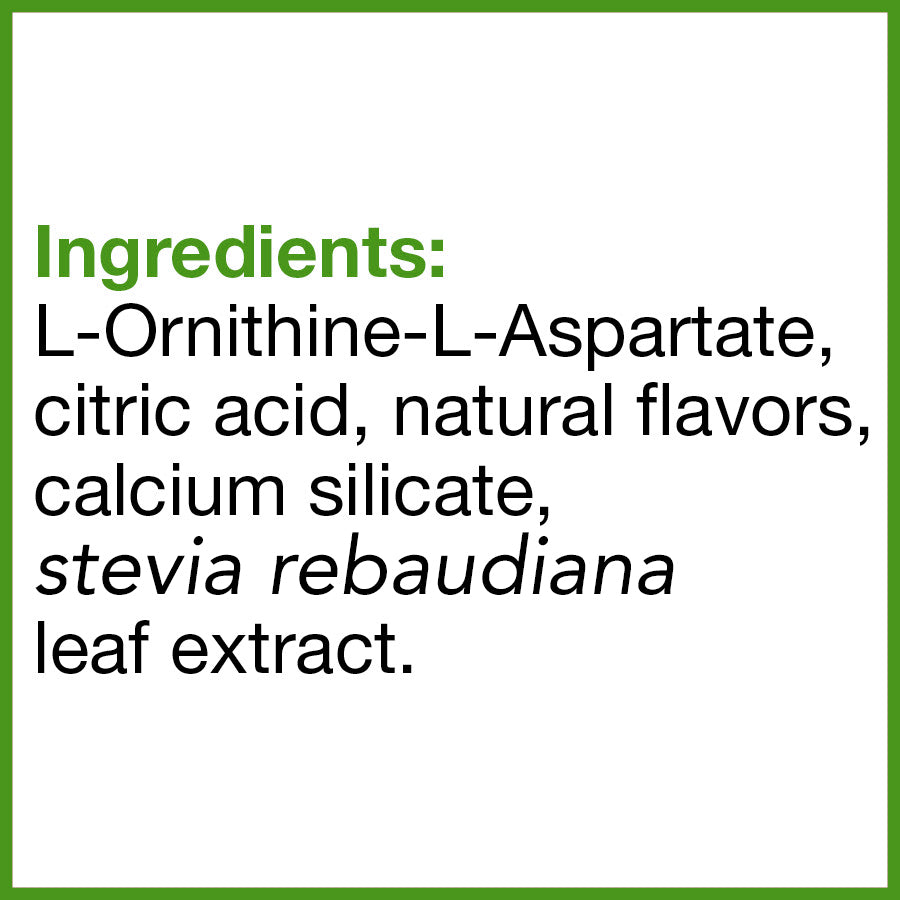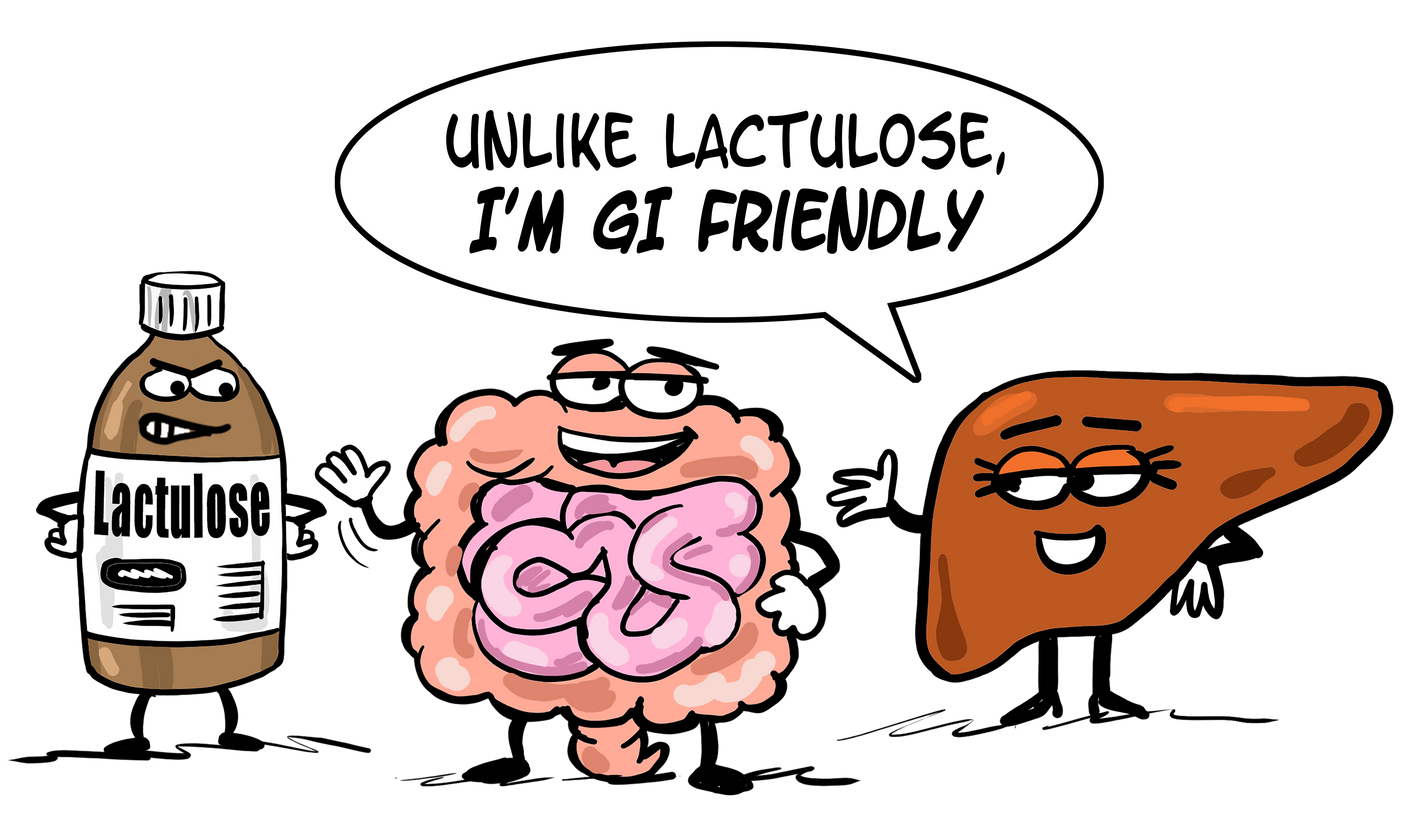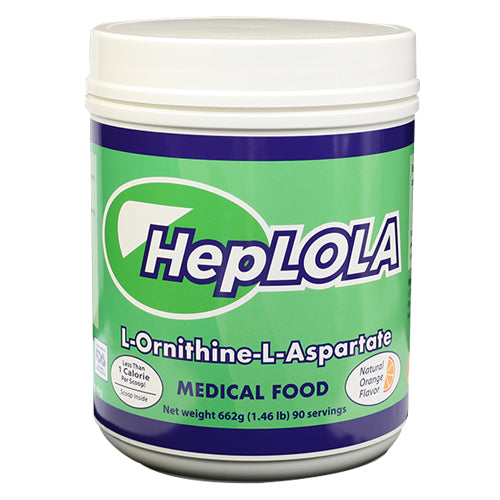
HepLOLA
- 6g Bonded LOLA per serving
- Less than 1 calorie per scoop
- GI Friendly
- Made in the USA in an FDA inspected facility
- Clinically Studied*
About HepLOLA
HepLOLA is a medical food indicated to treat and prevent hepatic encephalopathy. HepLOLA is 6g of Bonded L-Ornithine-L-Aspartate (LOLA) per serving. The use of LOLA for the management of Hepatic Encephalopathy is clinically studied, effective, and safe for most people.
HepLOLA is also used to treat elevated ammonia and cognitive decline due to elevated ammonia in NALFD/NASH.
HepLOLA needs to be used, dosed and monitored under the care of a qualified health care professional.
Mixing HepLOLA
A 6 gram dose of HepLOLA is designed to be taken as a drink and mixed with as little as 3 ounces or as much as 8 ounces of water, juice or any cold drink you prefer.
Don't mix HepLOLA with anything hot, such as coffee or tea.
Purchasing HepLOLA
HepLOLA can be ordered in the Buy HepLOLA section of this site. For outpatient use, a one month supply canister of HepatoLOLA has 90 servings. There is a scoop inside that has 6g of LOLA per scoop.
We offer standard ground and 2nd day air (3 day delivery time). We don't offer overnight shipping as the cost is prohibitive.
How HepLOLA treats Hepatic Encephalopathy and elevated ammonia due to NAFLD/NASH
L-Ornithine L-Aspartate lowers plasma ammonia concentrations by enhancing the metabolism of ammonia to glutamine and urea which is then removed by the kidneys as a component of urine.
LOLA in Hepatic Encephalopathy
-
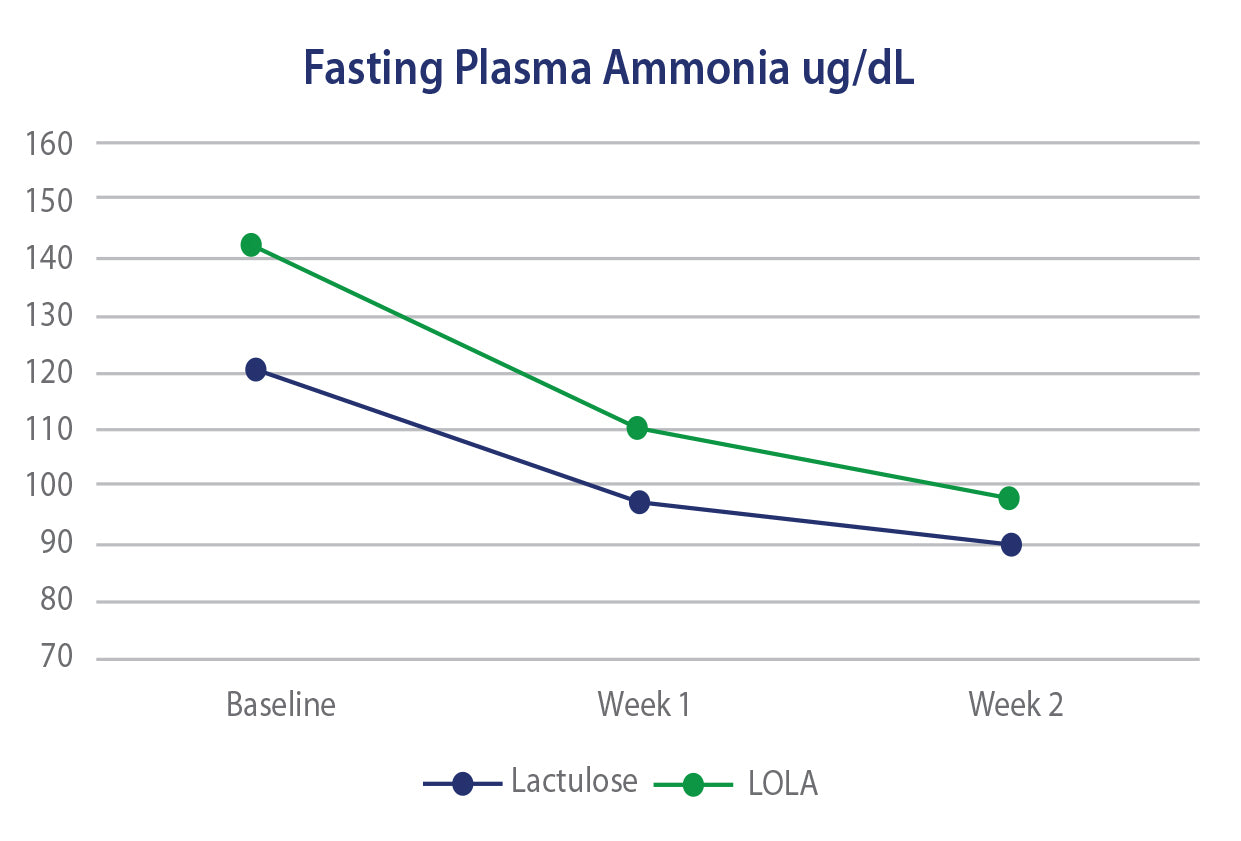
LOLA versus Lactulose
LOLA versus Lactulose in Minimal Hepatic Encephalopathy
-
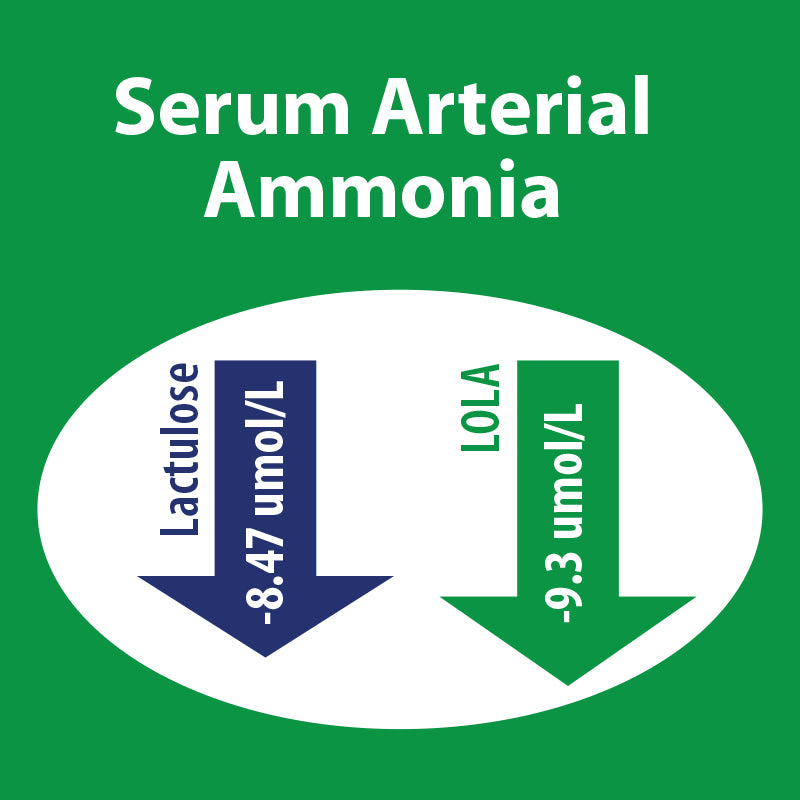
LOLA versus Lactulose in Minimal HE.
HepLOLA Improvements in NAFLD/NASH
-
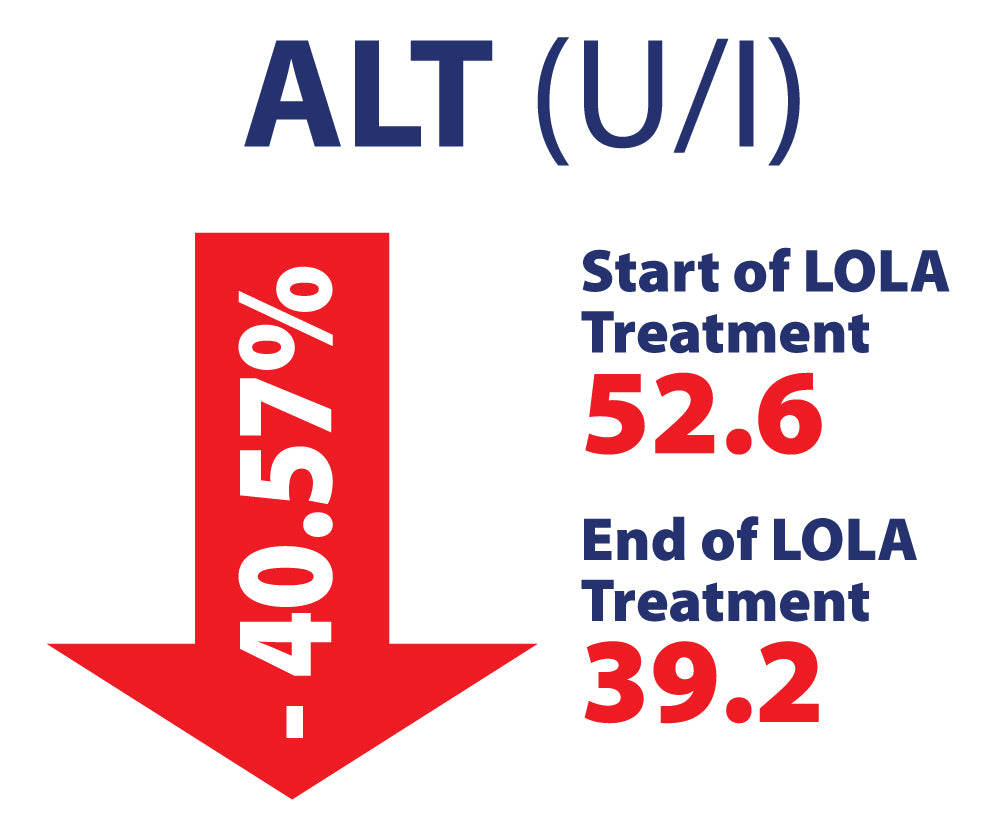
The use of LOLA for people with chronic liver diease including NAFLD/NASH has shown an improvement in liver enzymes.
-
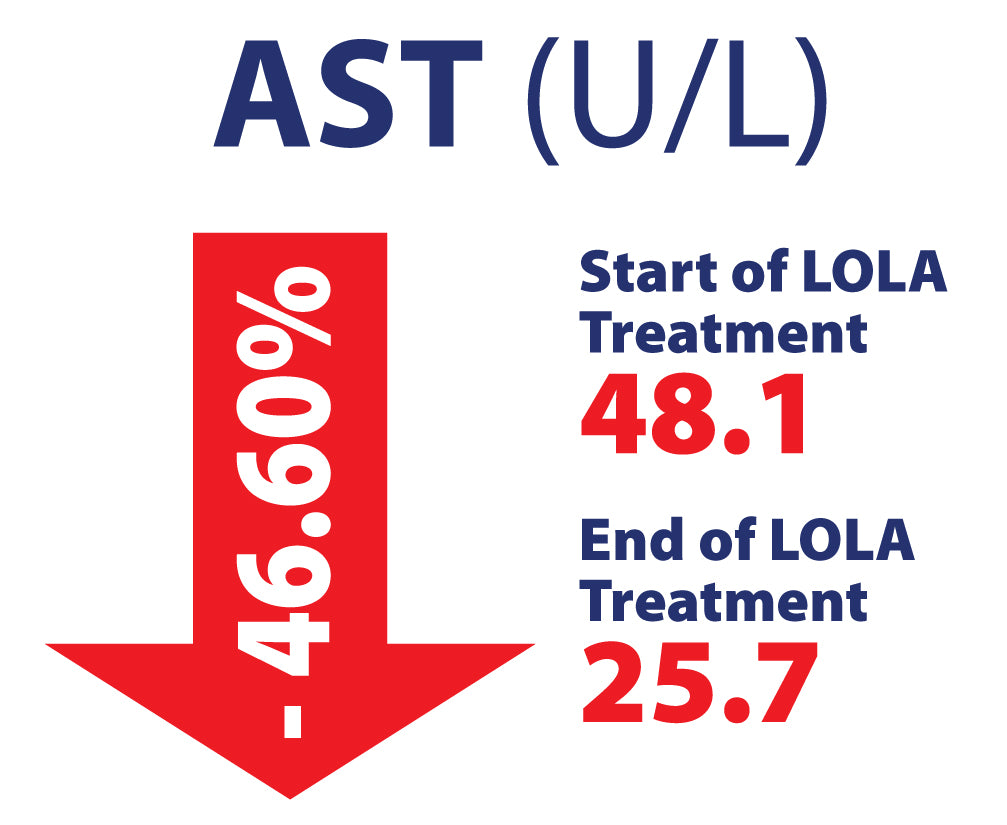
HepLOLA Ingredients
Who should not take HepLOLA
People with advanced kidney disease should not take HepLOLA.
The degree of kidney disease is measured by the lab value of serum creatinine. People with a serum creatinine ≥ 3mg/dl should not take HepLOLA.
A serum creatinine level of 3 mg/dl is generally equal to an eGFR of 17-25, which is graded as mid to late stage CKD 4.
About Hepatic Encephalopathy
Hepatic Encephalopathy (HE) is an altered level of consciousness as a result of liver disease. Its onset may be gradual or sudden.
Hepatic Encephalopathy can occur in those with acute or chronic liver disease. Episodes can be triggered by infections, GI bleeding, constipation, electrolyte problems, or certain medications. The underlying mechanism is typically attributed to the buildup of ammonia in the blood, which is normally removed by the liver. The diagnosis is typically based on symptoms, by measuring blood ammonia levels, and electroencephalogram, or a CT scan of the brain.

Symptoms
Hepatic encephalopathy affects how you think, feel and act.
Hepatic encephalopathy can show up in a wide variety of ways. Not everyone will have every symptom. It can affect your:
- Mood and personality.
- Behavior and impulse control.
- Memory, concentration and thinking.
- Consciousness, lucidity and sleep patterns.
- Coordination and motor functions.
- Autonomy and ability to care for yourself.
Symptoms may occur suddenly or come on gradually, and they may be steady and lasting or come and go in episodes. They may get better or worse, depending on your overall health condition. Hepatic encephalopathy can be mild to severe, and symptoms may be barely noticeable to striking.
Hepatic Encephalopathy Grading System Your Health Care Provider May Use
The West Haven Criteria is the most common grading system healthcare providers use for hepatic encephalopathy. It grades symptoms on a scale of 0 to 4. Stages 0 to 1 are sometimes called minimal hepatic encephalopathy (MHE) or covert HE. Symptoms in these stages may not be outwardly noticeable. Stages 2 to 4, also called overt hepatic encephalopathy, feature more obvious symptoms.
Symptoms by grade
Possible symptoms by grade include:
Grade 0
- Subtle changes in short-term memory, concentration and reaction time, only recognizable perhaps to you or those closest to you. They might show up on standard neuropsychological tests.
Grade 1
- Mild confusion or forgetfulness.
- Mood swings, like euphoria or anxiety.
- Difficulties adding and subtracting.
- Difficulties with fine motor skills, like writing.
- Sleeping during the day and waking at night.
Grade 2
- Clear personality changes.
- Inappropriate or out-of-character behaviors.
- Lethargy and apathy.
- Disorientation in time (what day or year is it?).
- Slurred speech (dysarthria).
Grade 3
- Slow thinking and sluggish movements.
- Disorientation in space (Where am I?).
- Drowsiness and loss of general awareness.
- Severe confusion, delirium or amnesia.
- Involuntary twitching, tremors or asterixis.
Grade 4
- Total loss of consciousness (coma).






